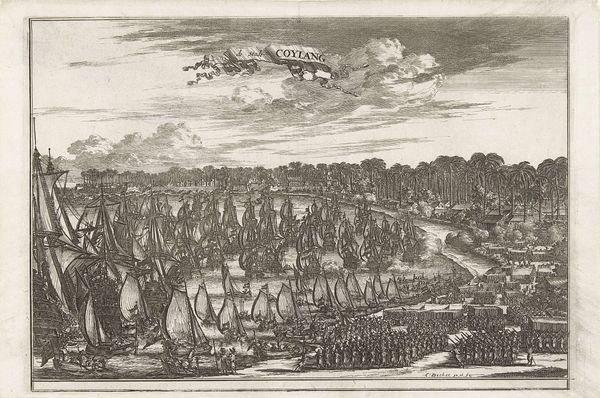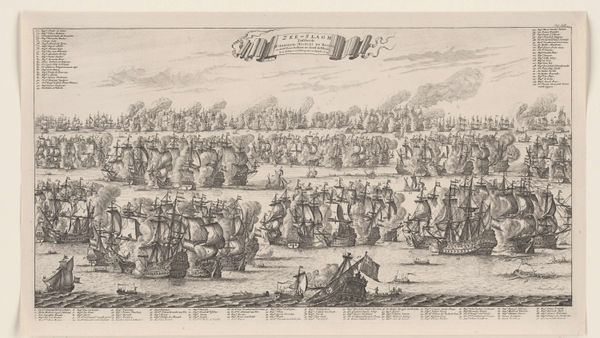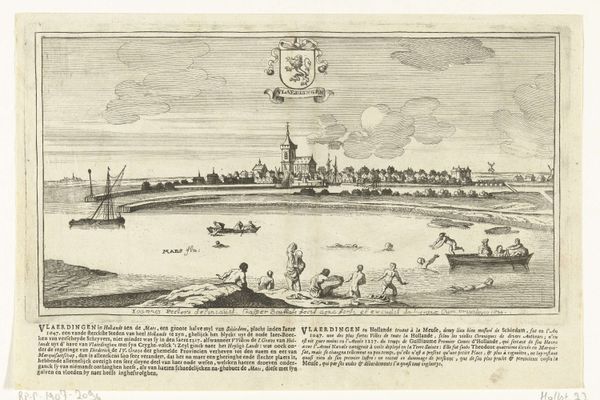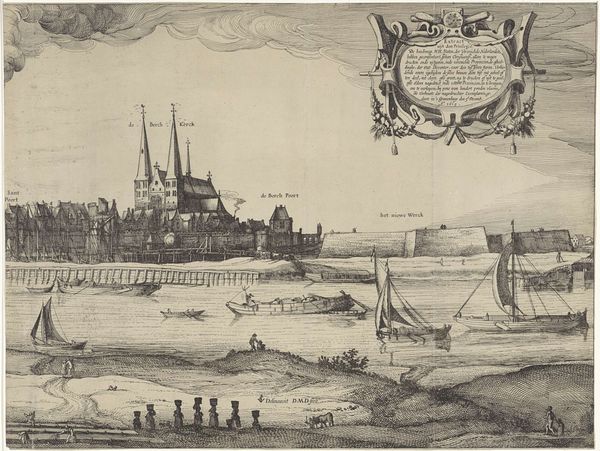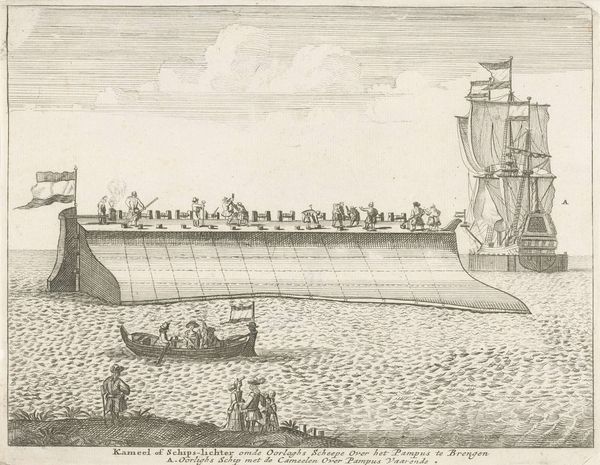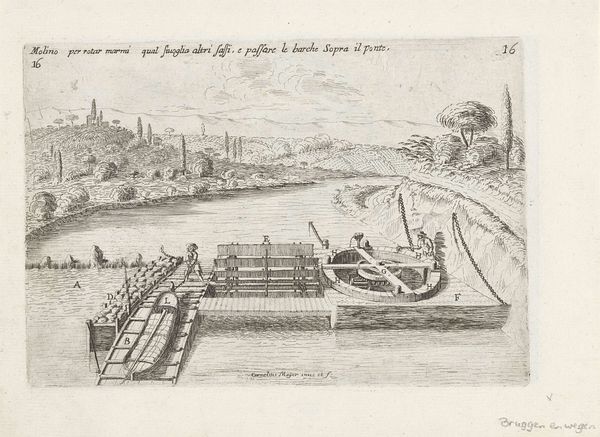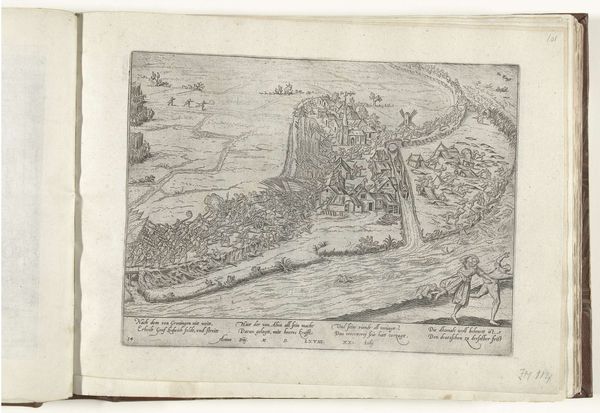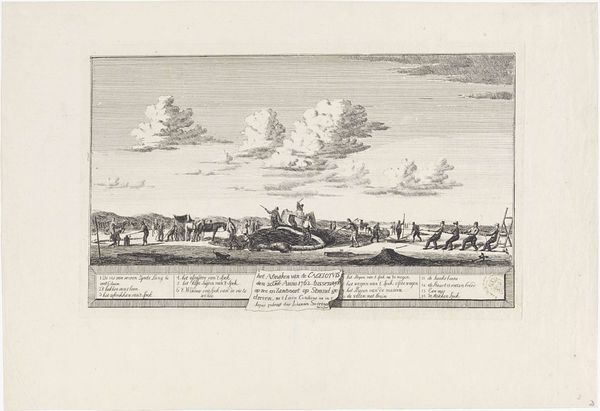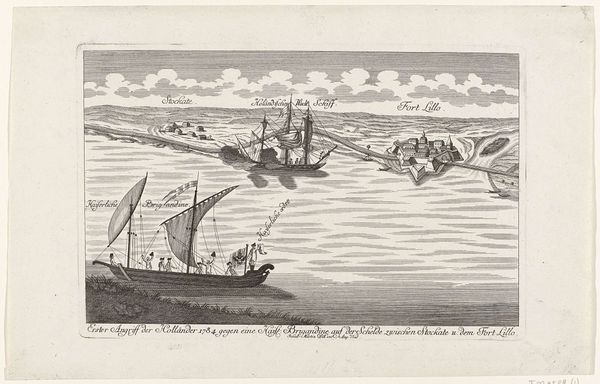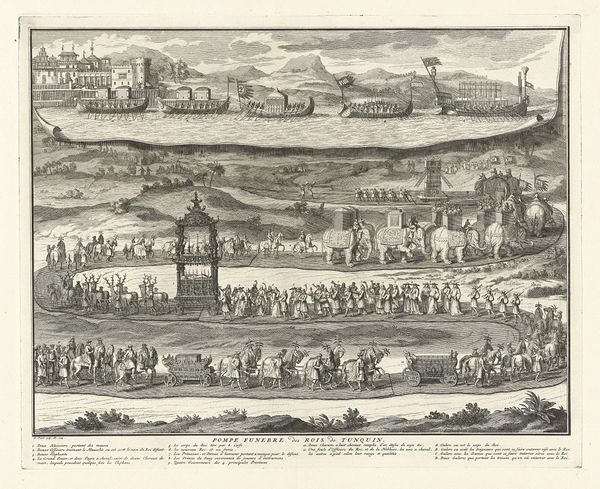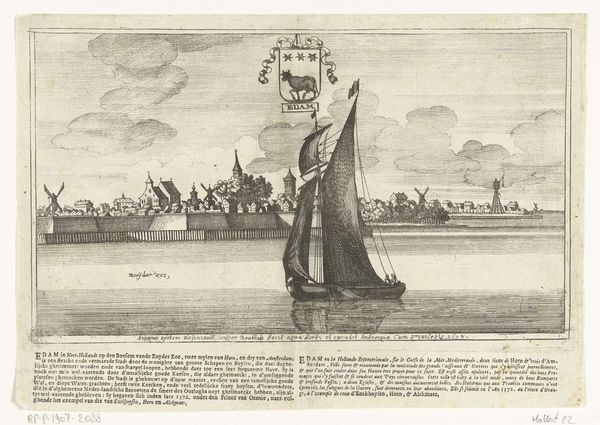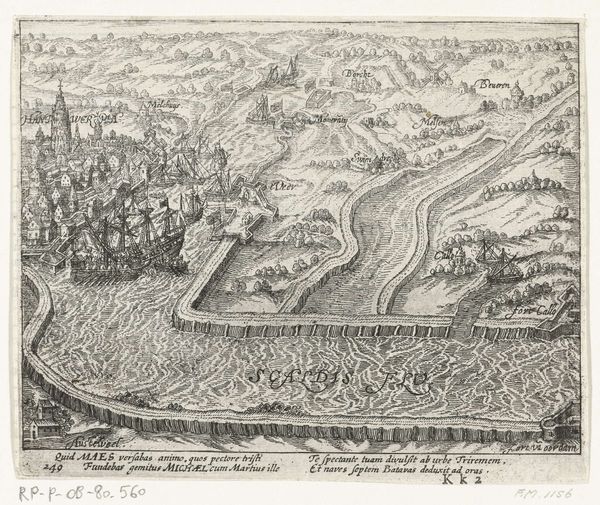
print, engraving
#
dutch-golden-age
# print
#
landscape
#
cityscape
#
engraving
Dimensions: height 244 mm, width 465 mm
Copyright: Rijks Museum: Open Domain
Editor: This is "Gezicht op de Vijverberg in Den Haag," an engraving from 1598 by Hendrick Hondius I, currently held at the Rijksmuseum. It’s fascinating; the detail is incredible given the medium. What strikes me is how the city feels both fortified and vibrant. What aspects of the piece capture your attention? Curator: Well, consider first the materials themselves: the copper plate, the acid used for etching, the paper, the ink. These were not simply neutral supports, but actively shaped the possibilities of representation. The very act of engraving, a painstaking, repetitive labor, becomes crucial. How does this meticulous process speak to the economic and social structures of the time? Editor: So you're thinking about the printmaking process less as a means of creating an image and more as a form of... production? Curator: Exactly. This print isn't just a representation of the Hague; it's a commodity. Its production relies on the skilled labor of the engraver, the infrastructure of printing workshops, and a market for such images. The lines aren't just depicting buildings; they are the traces of labour made visible, inviting us to consider what material realities underpinned Dutch Golden Age society. Do you see how this redefines our understanding of landscape as more than just a view? Editor: I see what you mean. I was focused on the aesthetics of the image itself, but the production of the engraving definitely connects it to a wider system. Thinking about who would have purchased and viewed these prints – that opens a whole new line of inquiry. Curator: Precisely. By considering the material production of art, we can move beyond formal analysis to uncover the economic, social, and political forces at play. What have you found the most valuable of this discussion? Editor: Definitely that material concerns shape aesthetics, and give insight into culture and social systems. Curator: Likewise. Paying attention to those lines of labor changes my experience of the image, and its historical contexts.
Comments
No comments
Be the first to comment and join the conversation on the ultimate creative platform.
